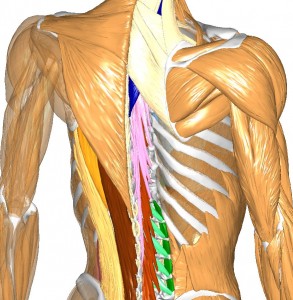 If you play golf, you hurt. Back, shoulder, hips, legs, arms. Because golf involves repetitious twisting, torquing, and violent ground contact, all of us who play are in pain some, or all, of the time.
If you play golf, you hurt. Back, shoulder, hips, legs, arms. Because golf involves repetitious twisting, torquing, and violent ground contact, all of us who play are in pain some, or all, of the time.
That certainly has been true for me. Suffering back pain since my teens, I’d tried nearly every available treatment: acupuncture, core exercises, diet, hypnosis, physical therapy, chiropractic, heat, cold, meditation. Everything helped for a short time, nothing long-term.
My first lasting relief came when I put my back (and subsequently my hips, neck, and shoulder) in the hands of Dr. Norman Marcus, former Chief of the Pain Treatment Service at Lenox Hill Hospital, past president of the American Academy of Pain Medicine, and founder of the Marcus Pain Institute in New York City. At the risk of sounding like a spiritual zealot, I can honestly say Dr. Marcus has been the answer to my pains.
Like me, most aching golfers see an orthopedist, which is fine if the problem is in the bones. But Dr. Marcus deals almost entirely with parts of the anatomy only recently getting the attention they deserve: muscles. “They don’t teach much about muscles in medical school,” he says. “Thanks to X-rays and MRIs, doctors can see bones, and do a great job when the problem is skeletal. But muscles are very often the source of pain and demand a different course of treatment.”
Many of his patients—he has treated novice and highly skilled golfers, tennis players, baseballers, and other athletes—have seen other doctors (sometimes two, three, or more) without relief before coming to the institute. Dr. Marcus usually begins his evaluation with a lesson in muscle mechanics, followed by an examination with a patented device that uses mild electric stimulation to identify the pain producers. After administering an anesthetic, he uses a needle (no steroids or other substances are injected) to break up trigger points—hardened areas of muscle tissue caused by injuries that could be years old—and re-stimulate blood flow. This is followed by physical therapy and a regular regimen of stretching exercises.
It may be that more than one muscle is injured, in which case the initial treatment is followed by another painful area presenting itself. Dr. Marcus described it to me like peeling an onion, and when I first started seeing him more than six years ago, I was a regular for weeks as we slowly identified and treated muscles throughout my back and hips. I’ve been back about once a year for new problems in my neck and shoulders.
And just as it’s possible to rebreak a bone, so it is possible to reinjure a muscle, especially without adherence to the stretching routines. I start every morning with 30-45 minutes of exercises and diaphragmatic breathing that have proven life-changing: I’m don’t think I could function without them. If a treated area acts up again, I cut back my activities for a day or two and make sure I’m stretching and breathing properly, which usually does the trick. (This is not a paid endorsement: My visits are covered by insurance and co-pays.)
The most notable problem with Dr. Marcus is that there is only one of him and only one office, in midtown Manhattan. But patients come from far and wide: The usual course of treatment is a week or two, with an initial evaluation and injections followed by daily physical therapy/electric stimulation in his office. I’ve spoken to many patients in his office who mix treatment with a Big Apple vacation.
His new book, called “No More Back Pain” (Atria Books), is scheduled for release next summer. In the meantime, he can be reached at the Marcus Pain Institute, 30 East 40th Street, New York, NY 10016; (212) 532-7999.
